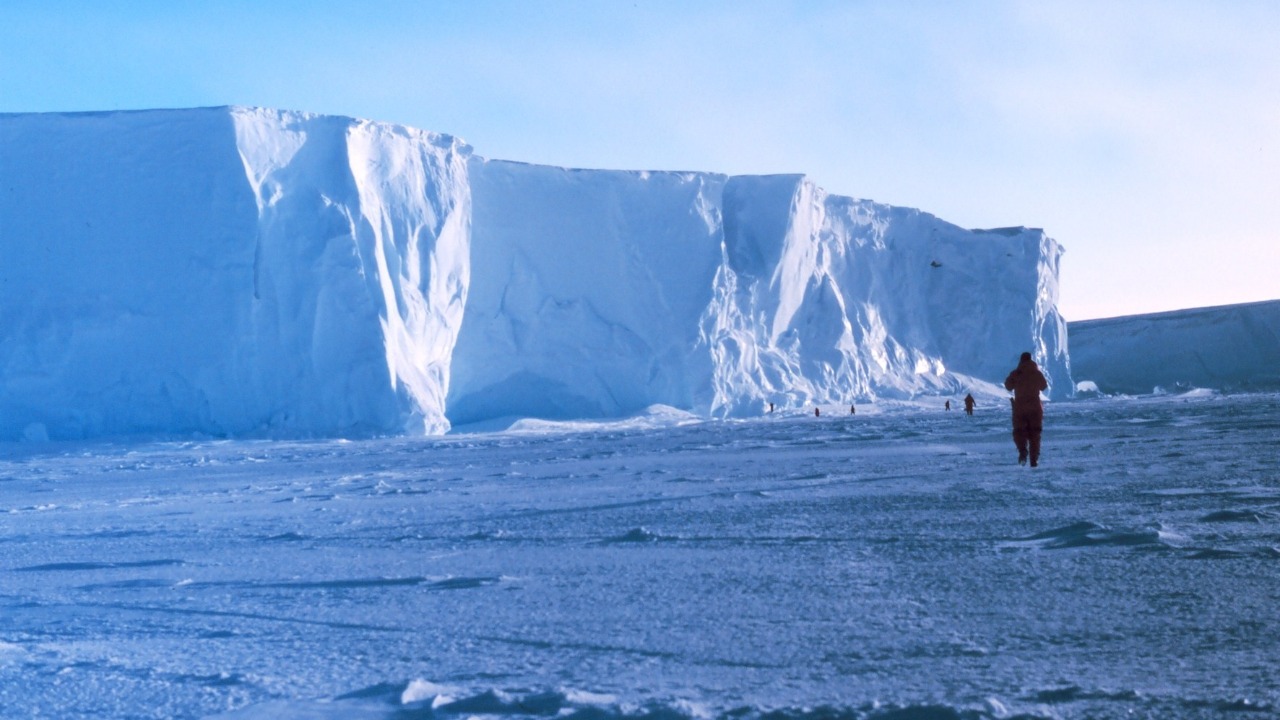
Scientists have unveiled a remarkable discovery beneath the Arctic ice, revealing a hidden ecosystem thriving in one of the planet’s most inhospitable environments. This groundbreaking find, announced on October 21, 2025, challenges previous assumptions about life in polar regions and builds on earlier discoveries of vibrant marine communities beneath Antarctic ice. Researchers involved in these studies have expressed their astonishment at the complexity and beauty of these ecosystems, which were once thought to be barren and lifeless.
The Arctic Ice Discovery
The recent discovery beneath the Arctic ice has uncovered a diverse array of life forms, including unique microbial communities and larger organisms adapted to the extreme conditions. This thriving ecosystem was revealed through advanced sub-ice imaging techniques, which allowed scientists to observe these life forms without disturbing their habitat. The findings challenge long-held beliefs about the limitations of life in polar regions, suggesting that the Arctic may host a more complex web of life than previously thought. This discovery not only expands our understanding of polar biology but also offers insights into how life can adapt to extreme environments, potentially informing the search for life on other planets.
The implications of this discovery are profound, as it highlights the resilience and adaptability of life in sub-ice habitats. By studying these ecosystems, scientists can gain valuable insights into the mechanisms that allow organisms to survive and thrive in such harsh conditions. This knowledge could have broader applications, from informing conservation efforts in polar regions to guiding future research into extremophiles and their potential uses in biotechnology.
Antarctic Ice Shelf Revelations
Earlier this year, a similar revelation occurred beneath an Antarctic ice shelf during a research expedition coinciding with a giant iceberg calving event. On March 23, 2025, scientists discovered a thriving ecosystem hidden beneath the ice, characterized by a kaleidoscope of marine life. This startling find was further detailed when researchers peeked underneath an Antarctic iceberg on March 24, 2025, revealing a vibrant community of organisms that defied expectations. The discovery was met with astonishment, with one researcher noting, “We didn’t expect to find such a beautiful, thriving ecosystem” beneath the Antarctic iceberg.
These Antarctic findings underscore the dynamic nature of polar ecosystems and the role of iceberg dynamics in exposing hidden life. As icebergs calve and shift, they reveal previously inaccessible areas, allowing scientists to explore and document the rich biodiversity that exists beneath the ice. This process not only provides a window into the hidden world of polar life but also emphasizes the importance of continued exploration and research in these remote regions.
Broader Secrets Under Polar Ice
Antarctica, in particular, holds massive secrets beneath its vast ice shelves, with scientists only beginning to uncover the details. As of May 12, 2025, researchers have been delving into the mysteries hidden beneath the ice, revealing a complex and diverse array of life forms that challenge our understanding of polar ecosystems. By comparing the scale and diversity of life between Arctic and Antarctic sub-ice environments, scientists can gain a more comprehensive understanding of how these ecosystems function and interact.
Technological advancements, such as sub-ice imaging, have been instrumental in revealing these hidden ecosystems without disturbing them. These methods allow researchers to observe and document the intricate web of life beneath the ice, providing valuable data that can inform future research and conservation efforts. As scientists continue to explore these hidden worlds, they are uncovering new insights into the resilience and adaptability of life in extreme environments.
Implications for Polar Research
The ongoing discoveries of thriving sub-ice communities have significant implications for polar research. The role of iceberg dynamics in exposing these ecosystems highlights the importance of understanding the natural processes that shape polar environments. By studying these dynamics, scientists can gain insights into the factors that influence the distribution and diversity of life in these regions.
Furthermore, the recent Arctic find, along with earlier Antarctic discoveries, informs models of polar biodiversity resilience. These models are crucial for predicting how polar ecosystems may respond to environmental changes, such as climate change and human activity. As researchers continue to map additional hidden life zones under Arctic and Antarctic ice shelves, they are building a more comprehensive picture of the complex and interconnected nature of polar ecosystems.
Future expeditions will likely focus on exploring these hidden life zones in greater detail, using advanced technologies to uncover the secrets of these remote and enigmatic environments. By continuing to study these ecosystems, scientists can gain valuable insights into the resilience and adaptability of life in extreme conditions, with potential applications ranging from conservation efforts to the search for extraterrestrial life.